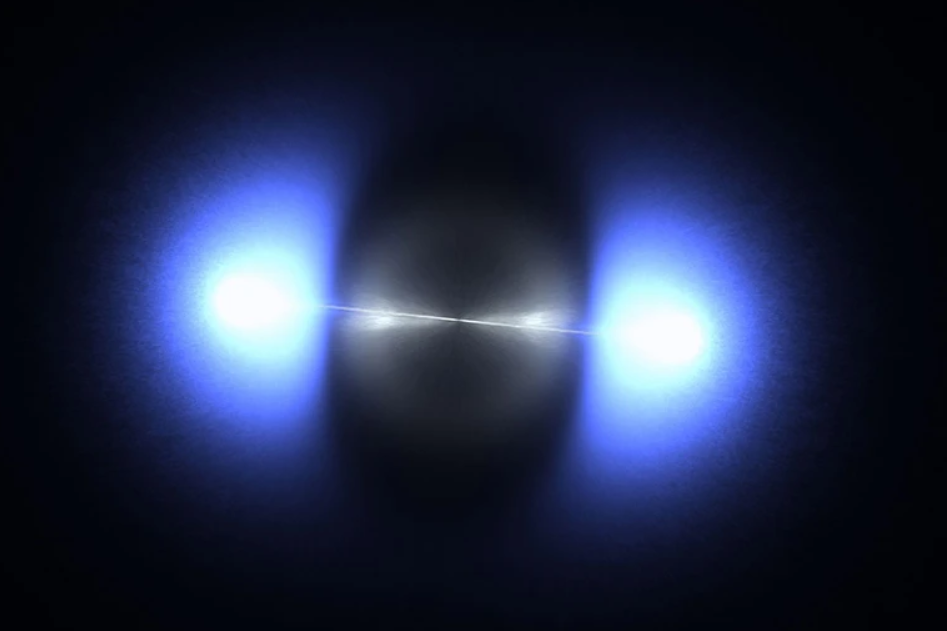Groundbreaking Quantum Computing Method Employs Individual Molecules as Qubits for the First Time
Optical Tweezers-Driven Manipulation of Molecular Platforms Holds Potential for Executing intricate Physics Calculations.

Physicists have embarked on the initial phase of constructing quantum computers utilizing individual molecules confined with laser devices known as optical tweezers. Two research teams detail their findings in Science on December 7, demonstrating the interaction and entanglement of pairs of calcium monofluoride molecules—a pivotal occurrence for quantum computing.
Adam Kaufman, a physicist at the University of Colorado Boulder, deems these papers a “landmark result,” emphasizing the newfound ability to harness entangled states for enhancing the potential applications of molecular tweezer arrays.
While early demonstrations of quantum computing principles, dating back to the late 1990s, involved manipulating large numbers of molecules within a solution in a nuclear magnetic resonance machine, researchers have since diversified platforms. These include superconducting circuits, individual ions in a vacuum, and, more recently, neutral atoms forming qubits trapped by laser-beam ‘tweezers.’
In a significant development, two distinct research teams have made initial strides in employing this laser-tweezer approach with molecules instead of atoms. Lawrence Cheuk, a physicist at Princeton University in New Jersey and co-author of one of the papers, notes that molecules, due to their added complexity, present novel avenues for encoding quantum information and interacting in unprecedented ways. This breakthrough opens up new possibilities for quantum information processing using molecular systems.
Extremely fascinating molecules.
In both investigations, optical tweezer arrays were employed, with one molecule confined in each tweezer unit. Through laser techniques, the molecules were cooled to temperatures of tens of microkelvin, just a few millionths of a degree above absolute zero. In this nearly motionless state, their rotation could be halted, or they could be induced to rotate with only one quantum of angular momentum, referred to as ħ—the smallest possible rotational frequency. Both research teams designated non-rotating molecules to signify the ‘0’ state of their qubits, while rotating ones represented the ‘1’ state.
Calcium monofluoride exhibits high polarity, with negative electric charges concentrated around the fluorine atom and a resulting net positive charge at the calcium end of the molecule. Researchers could prompt interaction between two calcium monofluoride molecules by sensing each other’s positive and negative poles, exploiting the dipolar interaction of molecules as an additional tuning mechanism, as highlighted by John Doyle, a physicist at Harvard University in Cambridge, Massachusetts, and co-author of the other paper.
In this manner, the research teams successfully demonstrated the entanglement of molecules, indicating the formation of a collective quantum system—a prerequisite for the operation of quantum algorithms.
While molecular quantum computers may generally exhibit slower performance compared to those utilizing alternative types of qubits, researchers suggest that molecules could serve as a natural environment for manipulating quantum information using ‘qutrits,’ which boast three possible states: -1, 0, and +1. Qutrits offer a potential avenue for conducting quantum simulations of intricate materials or fundamental forces in physics.
Doyle further notes that these advancements may contribute to leveraging trapped molecules for high-precision measurements, shedding light on the possible existence of new elementary particles.
Hannah Williams, a physicist at Durham University, UK, underscores the remarkable pace at which the field has progressed, stating that this achievement highlights the potential for molecules to serve as the foundation for a competitive platform capable of quantum simulation.
The research has been published in doi
This article is republished from NATURE under a Creative Commons license. Read the original article.
Do not forget to share your opinion with us to provide you with the best posts !




0 Comments